Seashell Piano
The seashell piano is exactly as it sounds, a seashell shaped piano. While it is a piano, it is also different from an actual piano as it is possible for the notes played by the user to be replayed back. In our project, we have it coded to be able to record and replay in one.
Throughout this project we learned that there’s a lot of complications which goes into design. Originally we decided to finish everything from the wiring to the coding before we worked on the outside. However, we learned that it was really hard to work on the outside because the wires were all over the place as we worked on it more and more. Thus, we ended up redoing all the wires after getting the code to work.
As for the design on the outside, we chose a seashell shape and elevated it so that it was easier to play the “keys” of the piano. In our original design, we didn’t actually think too much about being able to push the keys so it was just embedded and surrounded by wires. This was very apparent during user testing even though our code was also not working at the time. The buttons were hard to find and the code’s complexity made it difficult to find where the issue was.
Originally we had another idea but it was passed down due to similarity with a past year’s project. Luckily Fred had the idea of an instrument that is able to be played, recorded and played back. Although the issue of being able to push on the button was apparent from the start, we just assumed that there was a way to fix it without redoing the wirings. In our group, Fred was the designated coder since he was the most experienced. During the time of coding phase, I was there to watch and figure out the wirings with Fred in the the beginning. However, I wasn’t there at all times due to reviewing for calculus midterm and quizzes and tests for japanese. Nonetheless, when I was able to be there, we were able to come up with potential designs for the project, which is notably rejected in the end as we learned how to use the laser cutter.
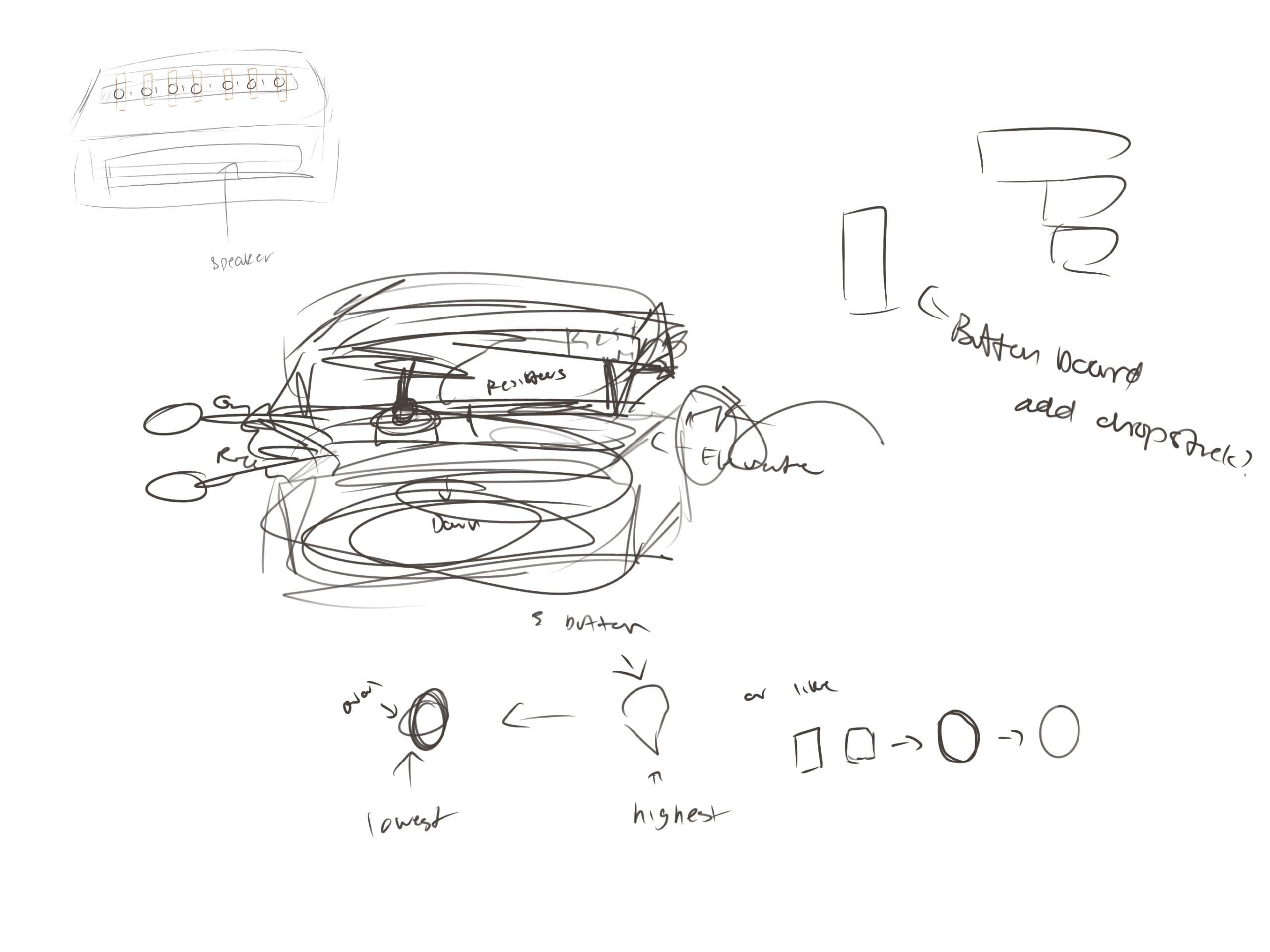
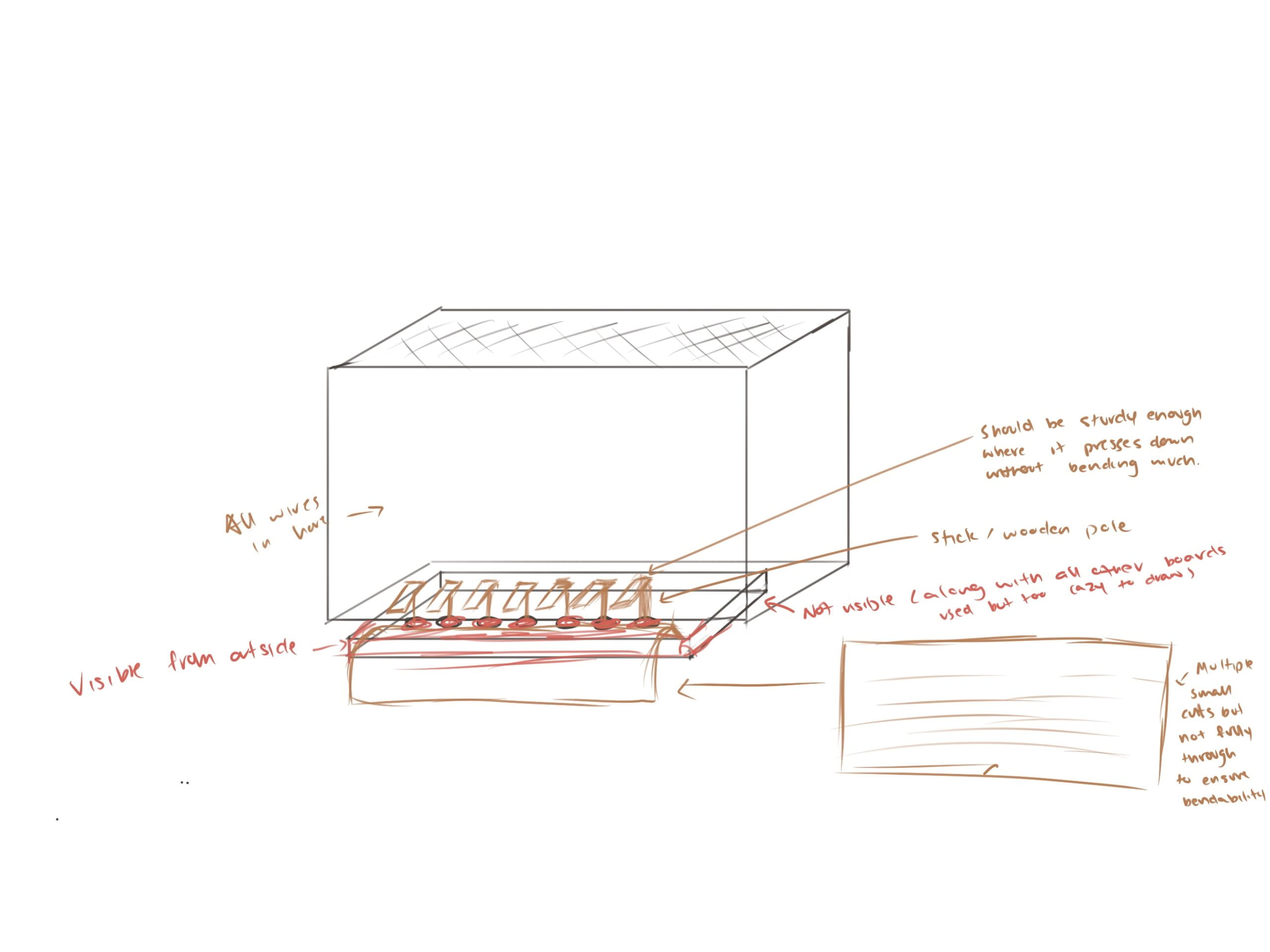 The laser cutter was incredibly useful in our project since cardboards were too flimsy compared to just wooden planks, and it was much more efficient compared to cutting out shapes from cardboard. Sadly, I wasn’t there for this part when the rest of the group learned how to use the laser cutter. I was however able to come in to help during the weekend and assembled the rest of the pieces while Fred finalized the codes. We chose to use fabric for the connection piece of the two shells because the fabric would allow light to shine through while also holding the shells steadily intact with each other. It’s also worth noting that during the days where I was unable to be there to help out, Henry was able to help in my place instead and was definitely more helpful than I was in the long run.
The laser cutter was incredibly useful in our project since cardboards were too flimsy compared to just wooden planks, and it was much more efficient compared to cutting out shapes from cardboard. Sadly, I wasn’t there for this part when the rest of the group learned how to use the laser cutter. I was however able to come in to help during the weekend and assembled the rest of the pieces while Fred finalized the codes. We chose to use fabric for the connection piece of the two shells because the fabric would allow light to shine through while also holding the shells steadily intact with each other. It’s also worth noting that during the days where I was unable to be there to help out, Henry was able to help in my place instead and was definitely more helpful than I was in the long run. 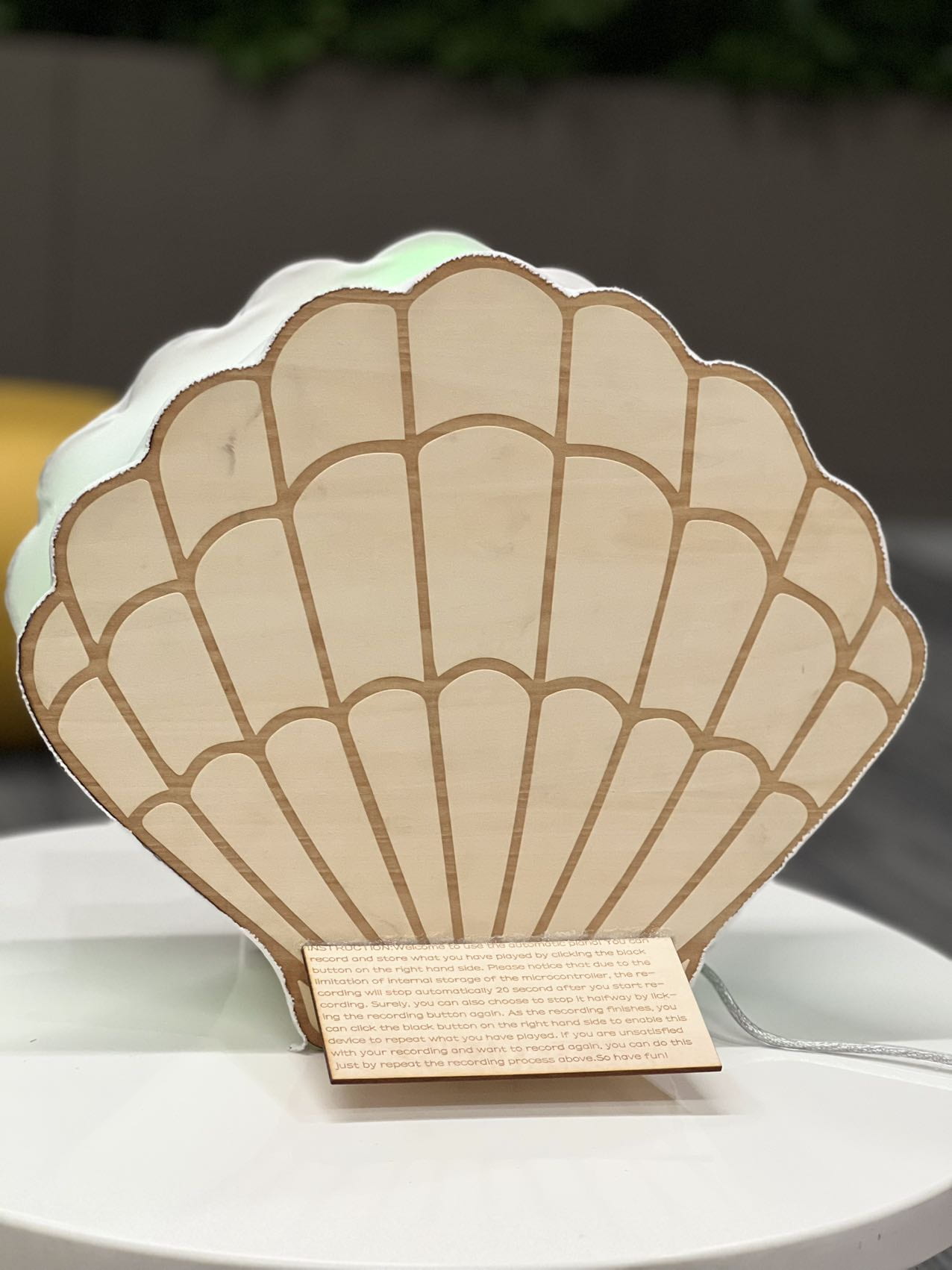
The assembly of the outside was also not as smooth as just “let’s put these parts all together”. This was once again due to the complexity of everything and we needed a way to be able to access the wires, the arduino, and LED, which resulted the very last section, the outside shell, to be the last to put together. If we had put the shell on before everything was completely completed and bug free, it would be super annoying to take apart just to fix the minor issue and put on again.
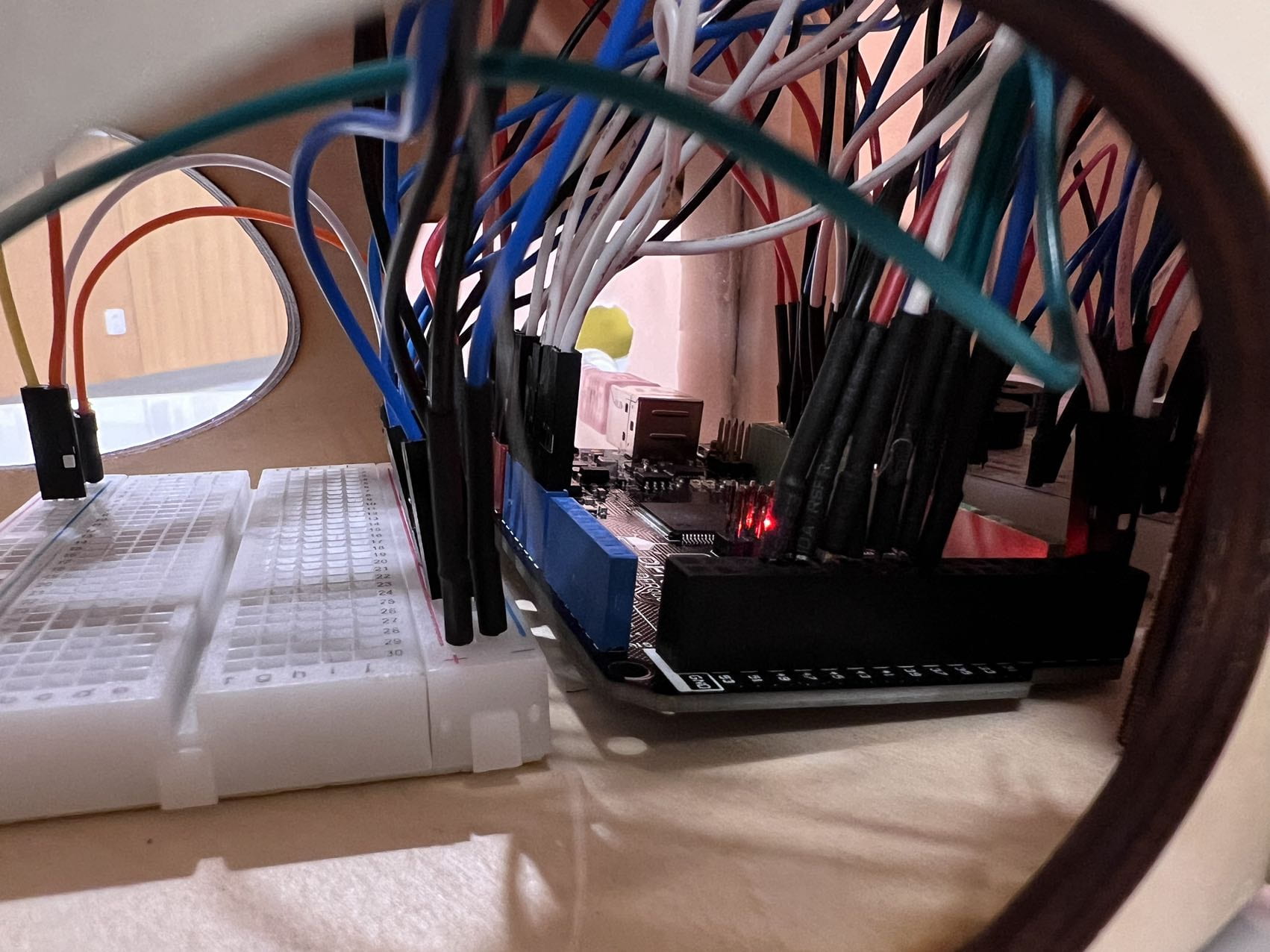
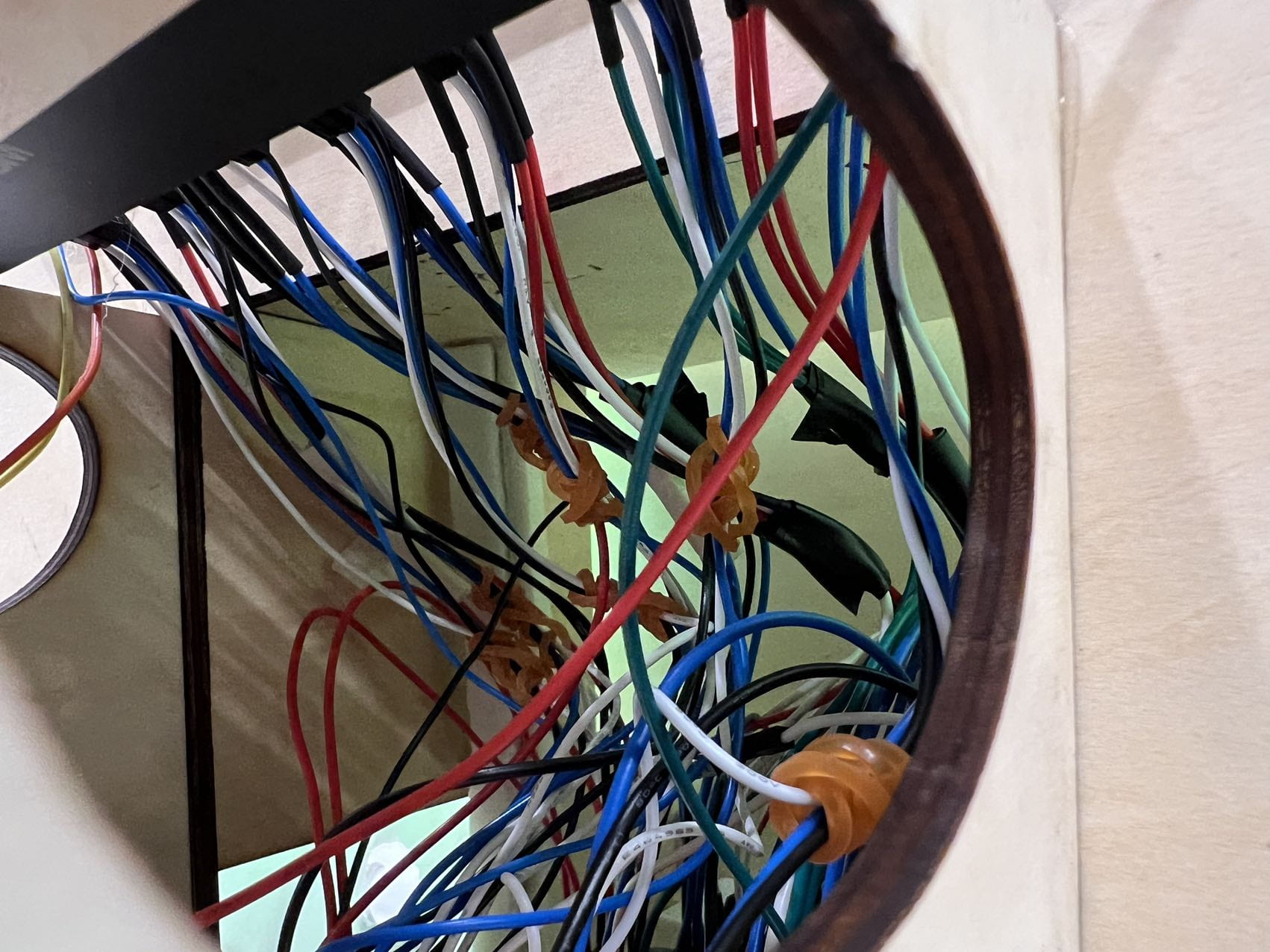
All in all, coding is something that I learned I have to more familiar with since I felt really useless when it comes to the codes in this project. To make up for it, I tried my best with the exterior and everything else that isn’t too technical to the point that I am confused.
It was also really enlightening for me to see how so many people were still willing to understand and test out our project during user phase when the code was sadly not working. We also received feedbacks like how we can design the exterior, since we didn’t have one at the time, and how we can add more things to it to make it more appealing.
To me, this project was able to bring people together to understand what was going on within. Even if I myself was part of it, I was still eager to find out new things about the project each time I worked on it due to my absence from time to time. Furthermore, it was just really fun to play and test out with due to the recording and replaying feature. One can record and it’s music and be played over and over again for the next person until they also choose to record their own melody. It’s a way to communicate through music!
Next time, I would choose to go into a project more planned out from the start since it was quite frustrating at times to see that a feature is no longer working or that we were behind on time due to the lack of design.
While the complexity of this project is something that I personally do not want to experience again, it is worthwhile to say that the complexity of everything is what made this work and it really was an experience to see how we went from a mess of wirings to what is now a pretty elegant seashell piano. Therefore, maybe it wasn’t such a bad thing that it is complicated.

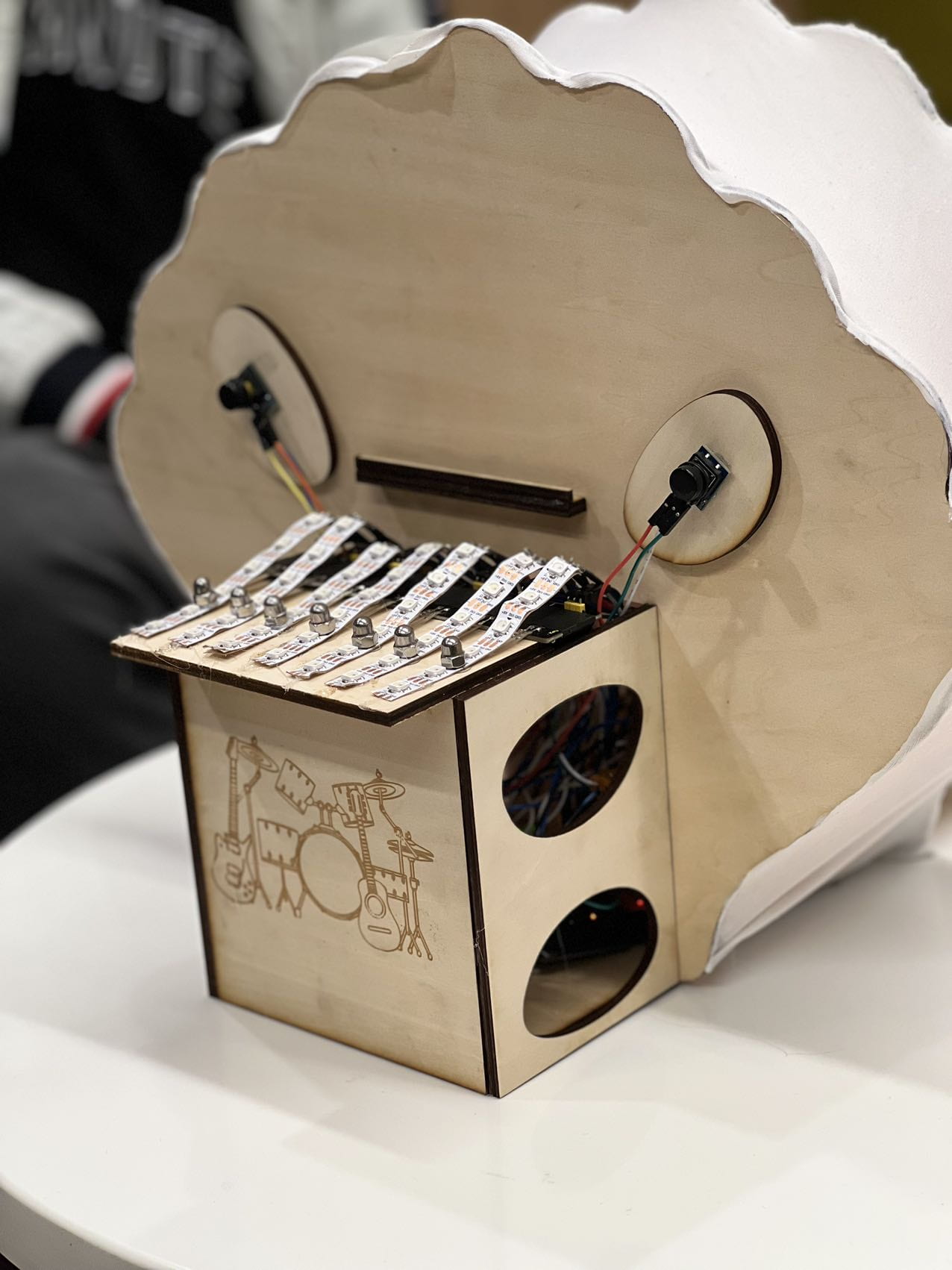
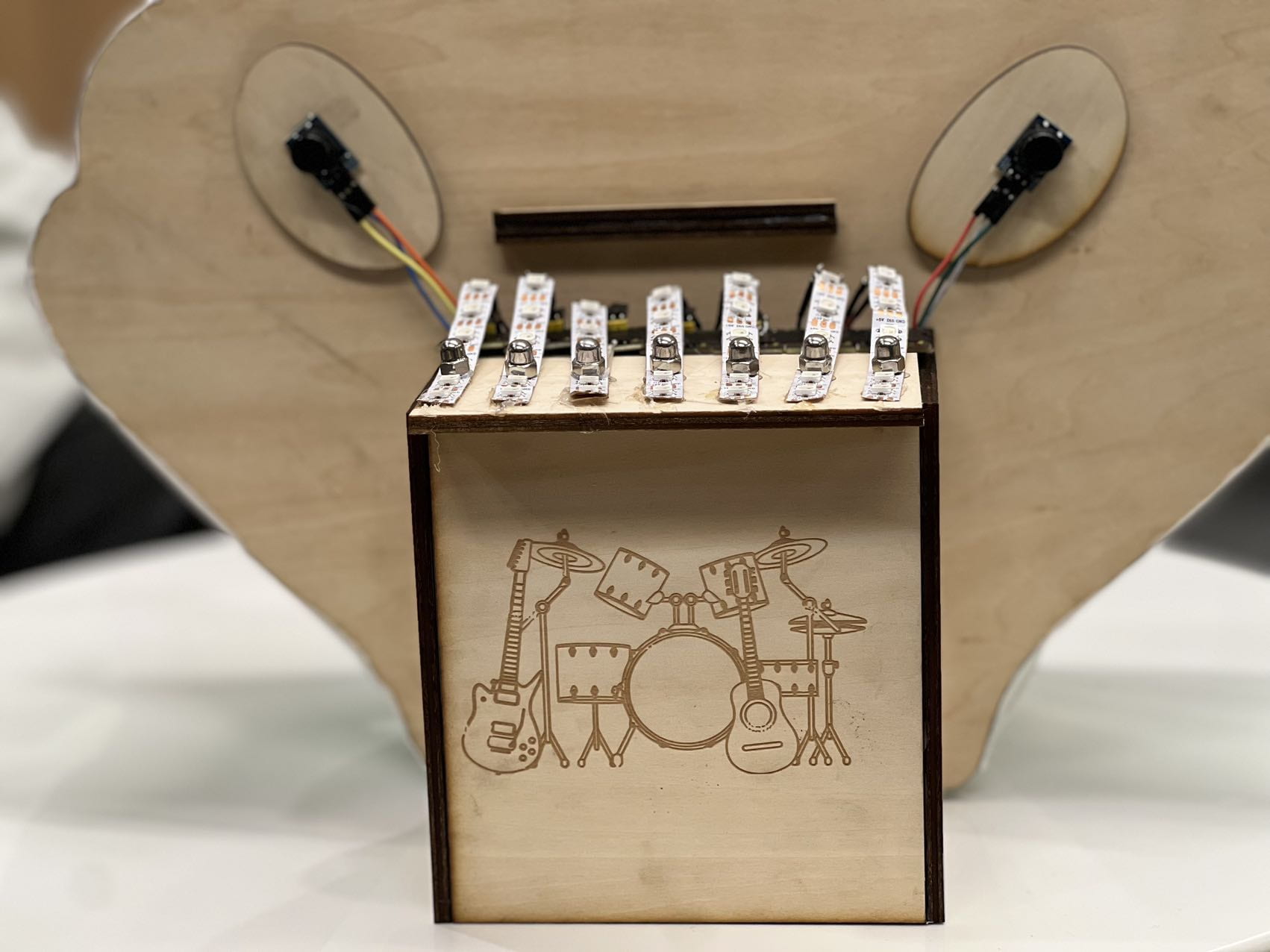
Professor: Gottfried Haider
